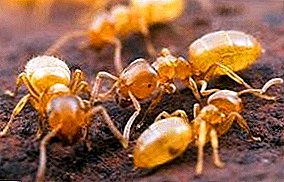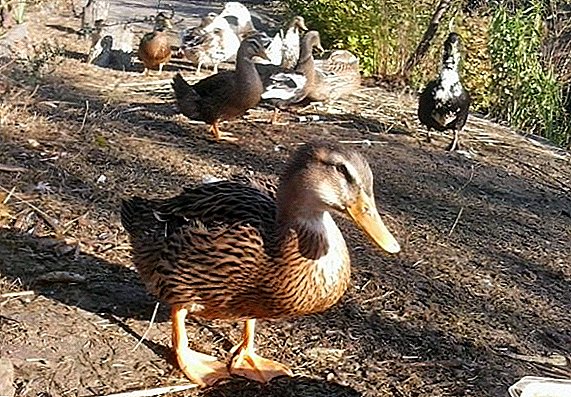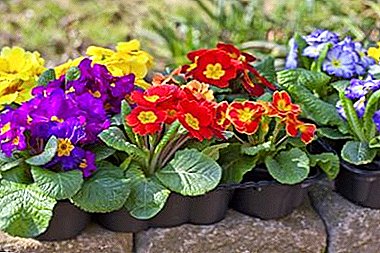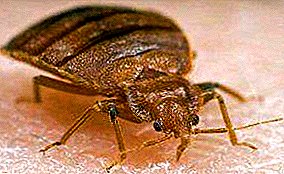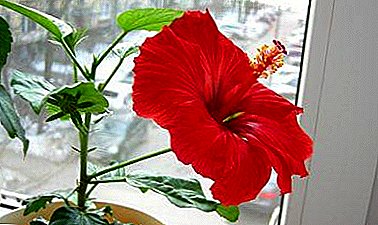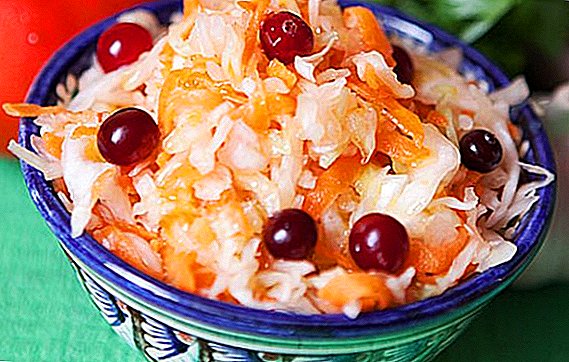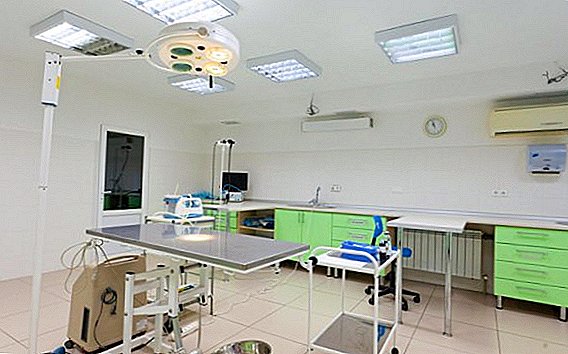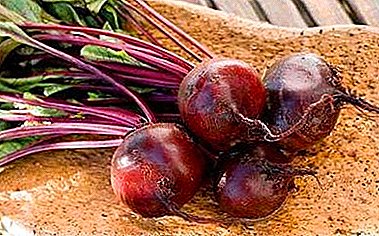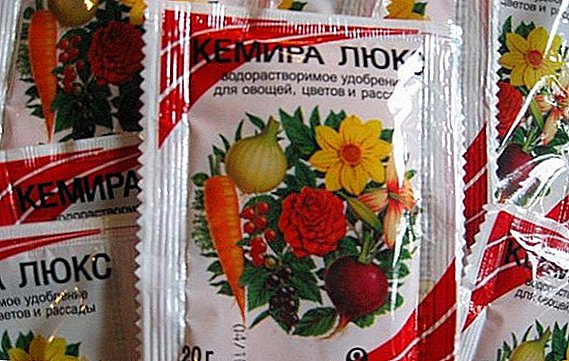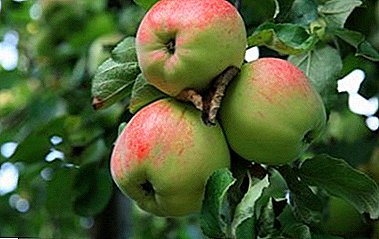
Everybody knows the apple tree is the most common crop of Russian plots of land. It is well tolerated by various climatic and soil conditions.
Only lowland and wetlands are not suitable for it, because the flowers can be damaged by return frosts.
Description variety Antonovka Dessert
Sort Antonovka Dessert is a winter variety. Regular fruiting begins for the third year after disembarkation. It is quite cold-resistant, resistant to scab.
There are other winter varieties that are popular with gardeners. For example, Antey, Aport, Renet Simirenko, Golden Delicious and Granny Smith.
Tree medium thick with spherical crown, passing with age ball shape. Oblong, ovate leaves of bright green color with jagged edge and wrinkled surface.
Large white and pink flowers in the spring decorate not only the tree, but the whole area.
Fruits are roundish, greenish-cream color with striped-speckled blush of a reddish shade. Weight - up to 200 g. The pulp has a sweet and sour taste, juicy, fragrant.
The consistency is medium-grained. Tasting evaluation - 4.2 points.
 Apples of this variety contain sugar, including glucose; organic acids (citric, tartaric, malic, etc.); pectins; essential oils; vitamins A, C, B1; tannins, micro- and macroelements (copper, iron, magnesium, potassium, calcium, iodine, etc.).
Apples of this variety contain sugar, including glucose; organic acids (citric, tartaric, malic, etc.); pectins; essential oils; vitamins A, C, B1; tannins, micro- and macroelements (copper, iron, magnesium, potassium, calcium, iodine, etc.).
In addition to fresh consumption, they are dried, baked, processed into juice, compote, wine, cider, boiled jam.
The presence of pectin allows you to use the fruit for making jelly, jam, mousse, jam, filling for pies.
In the form of dried fruit, they are a source of mineral salts (up to 0.5%), easily digestible sugars (up to 10%), and the seeds of one apple will provide the body daily iodine intake.
Tastes and inimitable aroma of Antonovka dessert is fully manifested during storage - it is difficult to catch it in the newly taken fruits.
The following varieties also demonstrate great taste and benefit: Orlinka, Orlovsky Pioneer, Aromatny, Moscow Winter and Young Naturalist.
Breeding history
Breeder S.I.Isaev a grade was formed Antonovka dessert from crossing Saffron Pepina and Antonovka ordinary.
Form as usual Antonovka, and taste sweeter, the fruits are large but winter hardiness is slightly lower.
The color of the fruit is greenish-yellow with a red striped blush, inherited from the variety Pepin Saffron.
Natural growth region
 In addition to central Russia and Belarus, it is widely distributed in the Volga region and Ukraine, in the northern Black Soil Region.
In addition to central Russia and Belarus, it is widely distributed in the Volga region and Ukraine, in the northern Black Soil Region.
For breeding Antonov dessert suitable areas such as: Orel, Tambov, Bryansk, Smolensk, Moscow, Ryazan, Tula, Kaluga, Lipetsk, Penza, Kursk, Voronezh.
In the Urals, Altai, the Far East and Siberia, it can only be grown on frost-resistant stocks with a low or shale crown shape.
Yield
Productivity from one tree from 40 to 120 kg. Fruits begin to shoot in September, consumer ripeness comes in a month. With proper observance of the collection and storage of the crop will remain in perfect condition until the end of March.
Winter productivity, Oryol Polesie, Petrova Dessert, Uspensky and Stroyevsky demonstrate excellent yield and storage stability.
Planting and care
When planting any fruit tree, it is necessary to take into account such factors as the right time and place. This is a guarantee that your apple tree will bear fruit well and will delight you with its fruits.
Under the apple trees, a plot is chosen so that the distance between them is 5-6 meters and from the border area - not less than 3 meters. When forming a low spreading crown, these parameters increase.
Groundwater should be buried no closer than 3 meters to the surface of the earth. The most suitable soils for culture are loam and sandy loam.
Clay soils are diluted with large river sand, sand - clay. And to those, and to others add peat, compost, humus.
When purchasing a sapling, you need to mark the side that was facing South when he grew up in the same place, and plant him in a permanent place as well.
An apple tree is planted in spring (in the last decade of April) and in autumn (in late September - early October).
 Planting pits are marked on a well-stretched rope and drive pegs in their place. Then take out the soil to the depth 50 cm and 100 cm in diameter.
Planting pits are marked on a well-stretched rope and drive pegs in their place. Then take out the soil to the depth 50 cm and 100 cm in diameter.
At the same time, the fertile top layer is folded to one side, and the clay or sand litter is to the other (it is not used later).
When the pit is ready, a lengthy flat section of the fence is driven into the center. 130 cm and 5-6 cm thick with surface level mark. This turn will be root neck of sapling.
The pit is half filled a mixture and trample down.
An earthen mound is piled around the picket fence and the roots are spread on it in such a way that the trunk is located on the north side off the bar and did not burn in the sun. Aligning the root neck with the mark, the roots evenly fall asleep.
Root neck - the place of transition of a trunk to roots, has non-uniform color. If the plant is not rosary, then beginners can confuse it with a place. vaccinationswhich is pronounced and looks like a caper.
But it is always located. 10-12 cm above the root collar. If the vaccine has a harness, it must be removed before boarding.
 When the landing hole is filled almost completely (5 cm to the surface), the seedling is slightly tightened upward so that the root neck is slightly raised above the mark.
When the landing hole is filled almost completely (5 cm to the surface), the seedling is slightly tightened upward so that the root neck is slightly raised above the mark.
After shrinkage of the soil, it will stand on the right place.
Now the pit fall asleep completely and plentifully watered. (3-4 buckets of water) in 2-3 receptions, mulch with peat or humus and tied with natural twine to the picket fence.
The first month and a half watered once 10 l a week.
In order to avoid harming the mice trunk wrapped in bark or nylon stocking.
From sunburn and pests shtamb bleached white with copper sulphate in two steps.
Shtambom they call the part of the tree from the lower skeletal branch to the root collar.
The main care for seedlings in the first year after planting is as follows:
- Timely pruning;
- Fertilization;
- Loosening (perekopka) wheel circle;
- Protection against pests and diseases;
- Watering;
- Weed control.
 For a plant of the first year after planting, pruning is not required; only damaged shoots are removed and form the skeleton of the future tree.
For a plant of the first year after planting, pruning is not required; only damaged shoots are removed and form the skeleton of the future tree.
These works produce before the kidneys wake up.
Formation is the subordination of the skeletal branches of the central conductor and the removal of shoots growing inside the crown.
Provided that the landing pit is properly filled, fertilizers are not applied during the first two years. except nitrogen - it activates the growth of shoots.
Nitrogen fertilizers contribute until mid-Julyotherwise the shoots will not have time to ripen to frost and die.
Pristvolny circle is loosely loosened after irrigation and added mulch as needed.
Periodically remove weeds and moisten the soil depending on climatic conditions, exterminate pests and carry out preventive spraying against diseases.
Antonovka dessert needs a relatively small pruning - it removes only part of the excess gains that have no prospects; bend back shoots or pruned to the bud, so that they become full-fruiting branches.
 Upon reaching the right heights (2.5-4 m)in order to stop the growth of the tree, they cut off the central conductor from above, transferring its functions to the side branch (2-3rd from above).
Upon reaching the right heights (2.5-4 m)in order to stop the growth of the tree, they cut off the central conductor from above, transferring its functions to the side branch (2-3rd from above).
Trimming and shaping is carried out only very sharp and disinfected tool.
All wounds inflicted on the tree are covered garden pitch or oil paint on linseed oil.
Fertilizers are applied in the spring based on Q1 m. wheel circle (crown projection).
They are evenly buried into the soil to a depth of 5 cm, closer to the periphery of the trunk circle, since the young suction roots are there.
Watering is carried out once a month in the absence of rain in the groove, dug around the circumference of the crown projection.
For plants of the 2nd and 3rd year of life it will be enough 3-4 buckets, and for adult apple trees with a crown diameter of more than 3 m, they make a groove with a rim on the outer edge and pour 40 buckets of water. This is enough to moisten the soil on 40-50 cm
Mulching - mandatory agronomic reception, especially for young plants. In the future, you can sow sideratami or keep the ground in a circle under the black steam.
A thick layer of mowed grass or hay-straw prevents the rapid evaporation of moisture and creates attractive conditions for the activity of earthworms loosening the soil.
Watch the video on how to properly prune an apple tree and form a crown.
Diseases and pests
A young tree can cause significant damage. caterpillars and weevilsconsuming delicate leaves. They need to be collected manually and exterminated mercilessly.
If the landing between rows umbrella culturesFor example, dill, it will appear wasp ridersexterminating many sucking and gnawing insects.
When appearing aphids (the leaves of the tops curl) shoots immersed in water with soap (on the bucket - 70 g).
Preventive measures against fruit saplings, moths, apple moths, haws and silkworms will not be damaged either.
Positive results are brought by spraying with insecticides and preparations of systemic exposure:

- Insegar - against leafworms and moths;
- Zeon - safe for bees;
- Aktarom - against several types of pests;
- Karbofos (can be used before flowering, after flowering, a month before harvest);
- Trichlorolum - 5 against several types of pests;
- Benzophosphate (valid for more than a month) is safe for bees.
Powdery mildew all organs of the plant are affected. At first it appears as a gray bloom, later turning brown and the appearance of black dots-spores.
The leaf turns yellow, the color dries up, the fruits are not tied, the growth of the shoots stops.
To combat this fungal disease apple sprayed on a young leaf "Topaz" or "Soon".
After flowering and harvesting, processing is carried out. copper oxychloride or bordeaux mixture. Fallen leaves are burned.
Bacterial burn manifested at the turn of June-July. Annual growth shrinks, leaves turn black.
Tree dies in two years. This the most dangerous viral infection transmitted with neighbor cuttings and seedlings, pest-borne.
Of the control measures only prevention is known:
- Disinfection of garden tools,
- Copper sulfate circle processing
- Burning affected trees
- Pest control,
- Healthy planting material.
 Cytosporosis affects the bark of the apple tree, causing it to dry and die.
Cytosporosis affects the bark of the apple tree, causing it to dry and die.
To combat it, apply a three-spraying. "Home" (swelling of buds, before flowering and after flowering).
In August, feed up phosphorus and potassium for better aging bark. The shtamb and skeletal branches are whitened in autumn and spring.
The quantity and quality of the fruit depends on the proper care. To grow an apple tree and get a crop of strength even beginner gardeners. The main thing is to give her enough time and love.


